The last decade witnessed Customer Success going through incredible growth & expansion. And as predicted by many studies, the momentum continues. Practiced by just a handful of early adopters, in 2010, Customer Success was at its infancy & was essentially unheard of in major broad meetings. Moving forward, and by 2020, Customer Success has become the pre-eminent subject amongst the corporate strategists, decision makers, & other stakeholders.
The sudden boom in startups & software as-a-service (SaaS) companies demanded the burden of being successful in using the product to be shared between the organization & the customer. Over time the Success team started getting included in the organization structure, and saw almost double the growth between 2013 to 2015. In 2017, the majority of the CS teams experienced the fast expansion in their team size & by 2018, LinkedIn alone saw 34% more job postings for Customer Success Managers (CSMs).
In the current competitive world that we live in, experience has inevitably become the new currency. And to see that many organizations have started focusing on customer outcomes & the quality of experience they deliver is extremely promising from a methodology perspective.
Leading Customer Success Organizations are still relentlessly working towards answering & defining the scope of the subject, early indicators promise that this is the right direction to move towards, & the right challenges to tackle at a leadership level.
I hope this study helps you shape & manage your CS strategies for 2021.

About the report
This report was curated after diligent research including customer success professionals from 126 companies across the globe. The study revealed many critical attributes of Customer Success & can serve as a credible resource for Customer Success professionals to understand the following:
- The Customer Success function, Maturity, Team Size, Compensation, and Organizational structure
- Priorities, Challenges, and Business Value
- Technology Stack for Enablement
- Key Performance Indicators (KPIs) to measure the effectiveness
- Impact of the global pandemic on the Customer Success function
- The Future of Customer Success
Introduction
From lead to customer, every touchpoint matters, and this is where & why Customer Success is thriving at such an explosive rate. Being a vital aspect of every organization for post-sale customer relationship maintenance, Customer Success's scope continues to gain momentum across all the industries. A simple search on LinkedIn gives you over 100,000 job results in the US alone and 4.1 million professionals in the Customer Success domain.
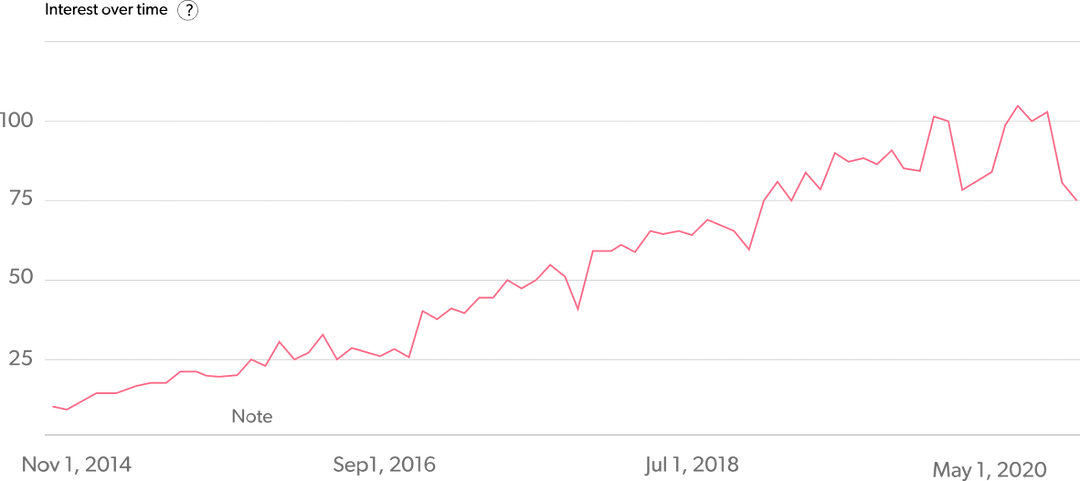
The Google Trends for Customer success - Worldwide since 2014 stands as the proof. Customer Success has truly become a phenomenon that has carved out a niche for itself.
Respondent Profile
The respondents pool had over 200+ professionals coming from companies of all sizes & funding statuses.
Representation of all subsets have been ensured to keep the report unbiased & to explore unsuspected correlations.
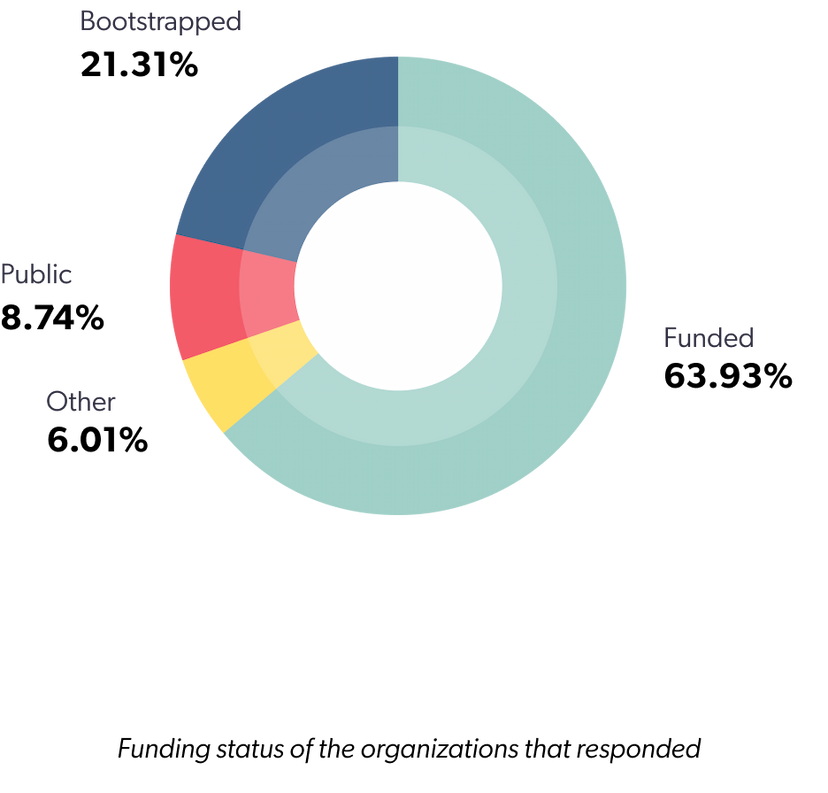
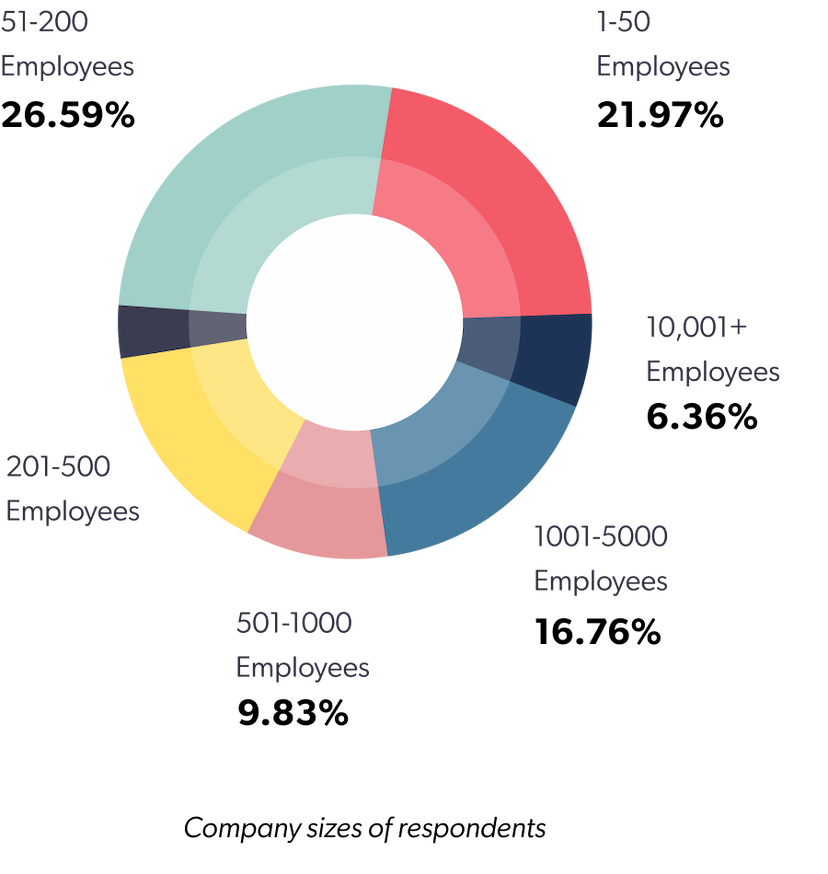
Key Findings
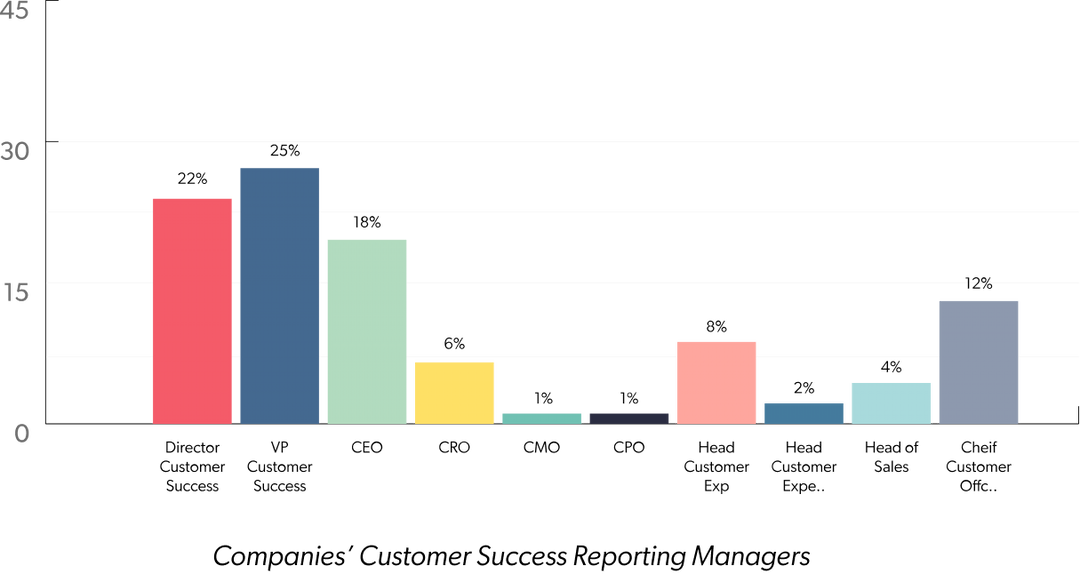
Though a strategic lever for your business, the impact that CS drives is deeply influenced by to whom the function reports to. As the data suggests, we too recommend that the Customer Success Team should be reporting to the CEO, especially when it is an early or mid-stage startup. As a CEO, one of the hardest challenges faced is to get clarity & accurate stats on what is happening inside the business & how the brand is perceived by the outside world. The ultimate aim is to gain actionable insights about how well balanced the magic loop- Plan & Build (product management & engineering) vs. Demand & Sales (Marketing & Sales) vs Customer Experience (Customer Success).
As the organization scales, or matures, we noticed that letting Customer Success report to VP sales or Chief Revenue Officer for better alignment with sales owning ARR/MRR goals rather than limiting the scope with bookings goals. To sum up, the best practice would be to set up Customer Success as an independent team that reports directly to the CEO. They should be entrusted with the direct responsibility for boosting customer engagement, satisfaction, & retention. The existing customer support, training, on-boarding, & even customer marketing functions operate under the customer success VP, who sits as a peer to the sales VP. The CEO can balance the alignment & bring both the functions together.
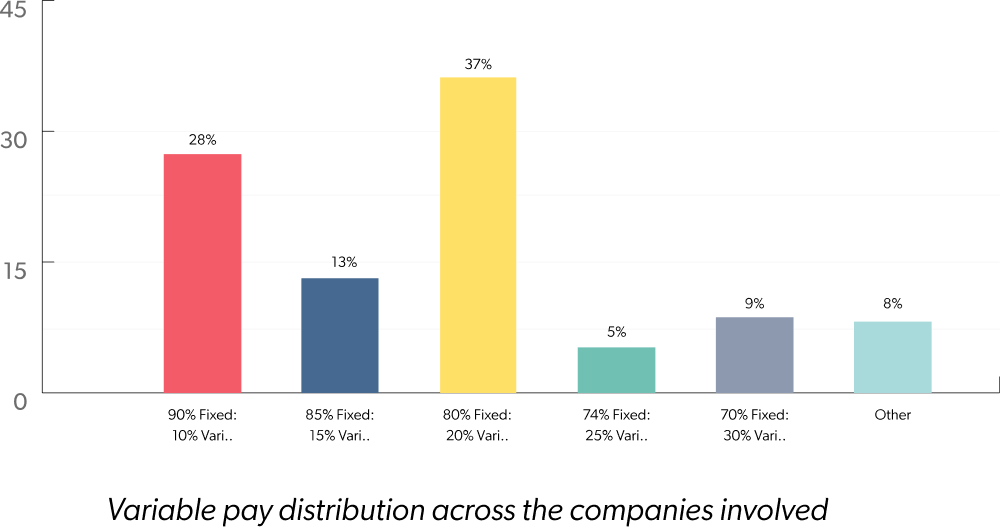
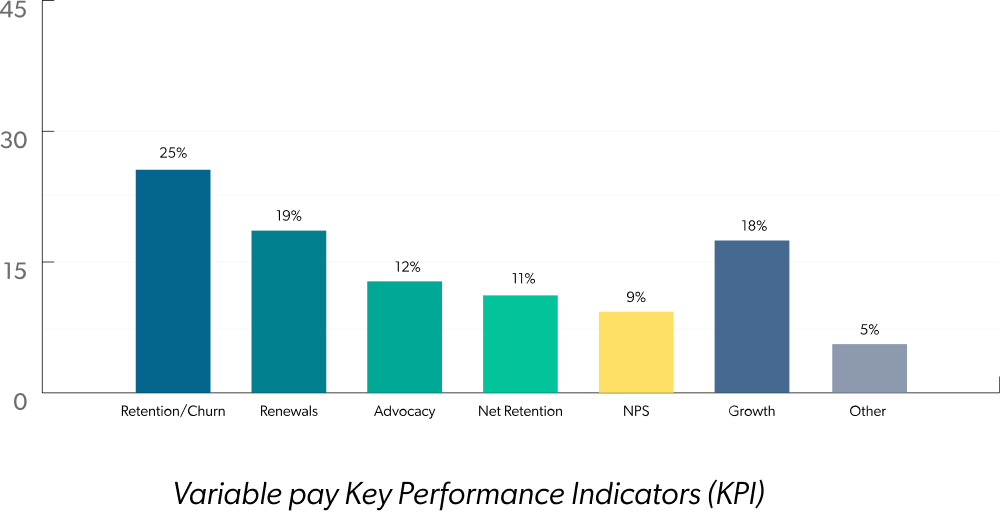
While 70% of companies have implemented variable pay, the most popular variable pay distribution 80:20, followed by 90:10.
Variable compensation is an incredible way to excite & retain your teams. It drives personal success & encourages you to prove value to your company. In spite of all this too, the customer success role still lacks a standardized incentive model both in terms of distribution & KPI’s.
The collected survey responses indicated that although CSM’s retention remains the most popular, there is an inclination towards CSM’s carrying a MRR quota. Having a clearly defined KPI & an exciting variable pay helps to bring clarity on what counts as success.
Rather than looking at Number of Accounts per Customer Success Manager individually, you should combine the same with ARPU to draw the big picture.
The most popular theory many go by is 1 CSM per $2M in ARR. Even though the original source and it’s validity has been much debated, the statement has stuck & is well-known. However, each business and their CS team is completely unique, and applying a generic model hence remains inadequate.
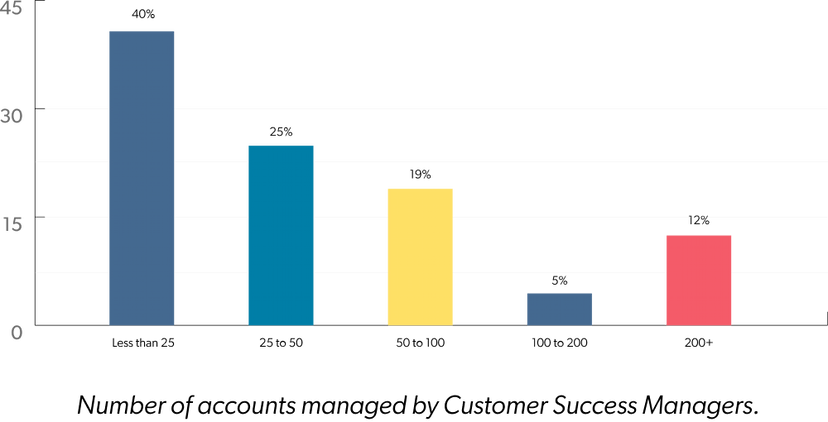
The best practice would be to segment your customers & outline the details of the required coverage in each. This then should be matched to the characteristics of the Customer Success Professionals who are entrusted to handle them. By adopting this approach you get reliable data on how many accounts each CSM at a particular level can manage and help.
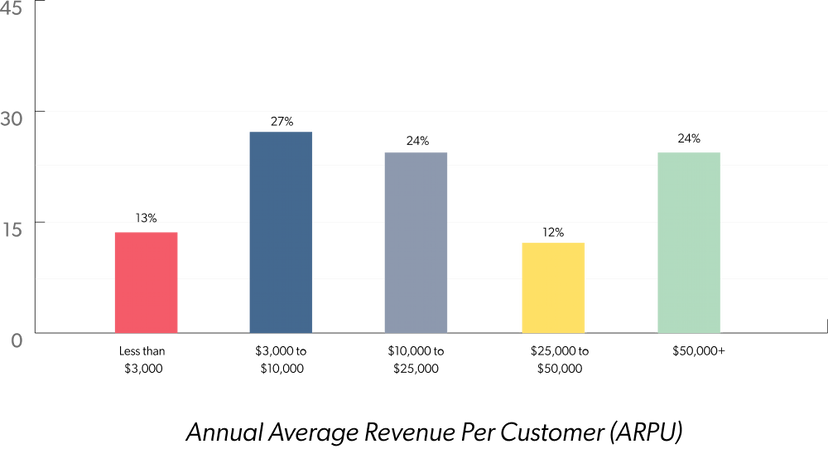
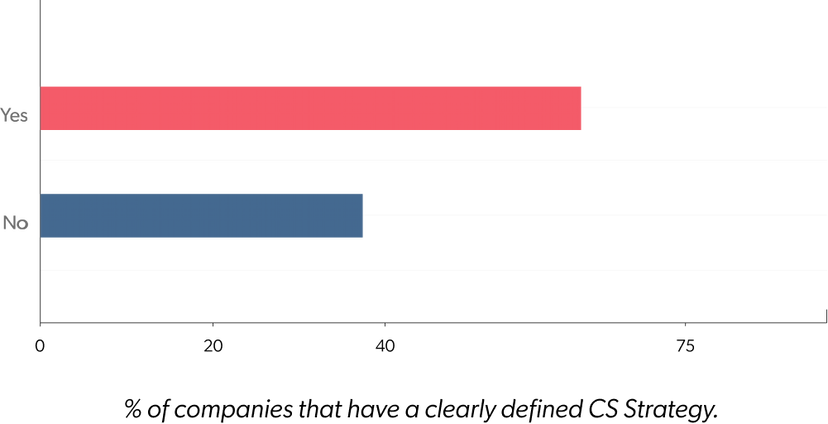
It is amusing to see that 37% of the companies don’t have a clearly defined CS strategy. The survey results indicate that many businesses and companies are still stuck with just guided tours of software, & generic manuals, rather than building paths to success. Customer success in its truest sense cannot be treated as an add-on or be limited as a simple strategy. It requires the leadership team to formalize things in three main areas - the business’s strategic framework, CS delivery model & CS organization.
The strategic framework helps to outline what key pain points the business helps to solve for its customers & how it delivers the products or services in a profitable way. The core of customer success lies in its delivery model, which essentially sets the process through which the business ensures ROI or measurable value to the customer in a profitable, scalable, & repeatable way.
How CS is staffed to deliver is the final element, ie, the CS organization. COmpletely depending on the company framework, & the delivery model, this includes skills & staffing in CS, product, Sales, & even marketing.

Pradeep Rathinam
Chief Customer Officer, Freshworks.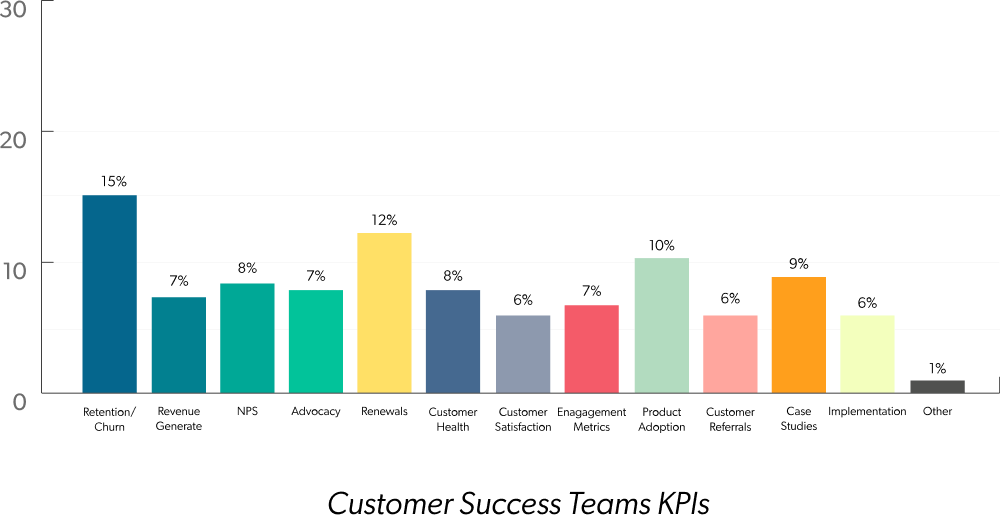
Our survey pointed out Customer Success teams’ highest priority are these key metrics,-Retention, Growth, and Adoption.
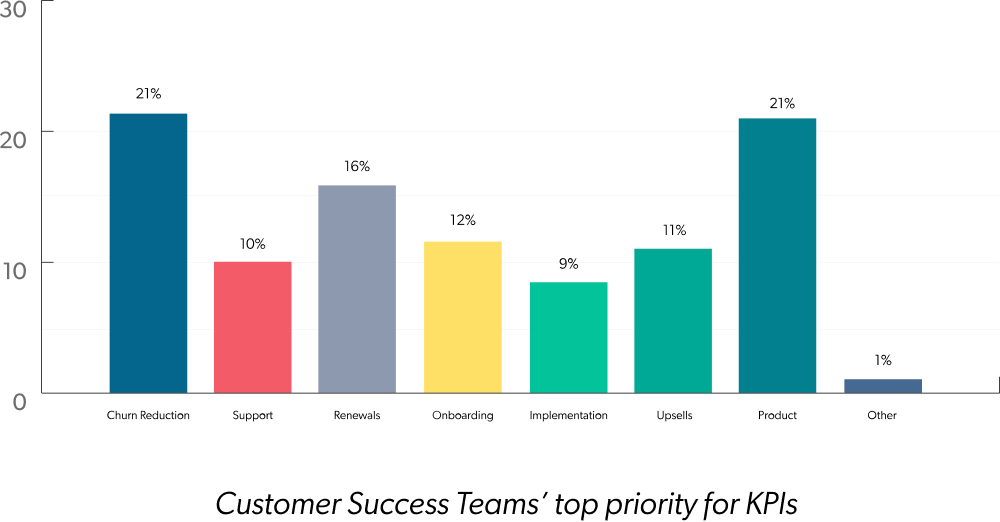
And, to achieve the same, Customer Success teams were found to be allocating most of their time & other resources towards managing customer expectations and doing continuous consultation with the customers.
Key benefits assured from the CS teams
A Customer Success team's primary function is to ensure that the customers receive the best value out of the product and to help them get the benefit of a better ROI (return on investment). The survey results implied the same is happening and also helped us uncover some more benefits that the customers receive with support from their CS team.

Boaz S. Maor
Chief Customer Officer at talech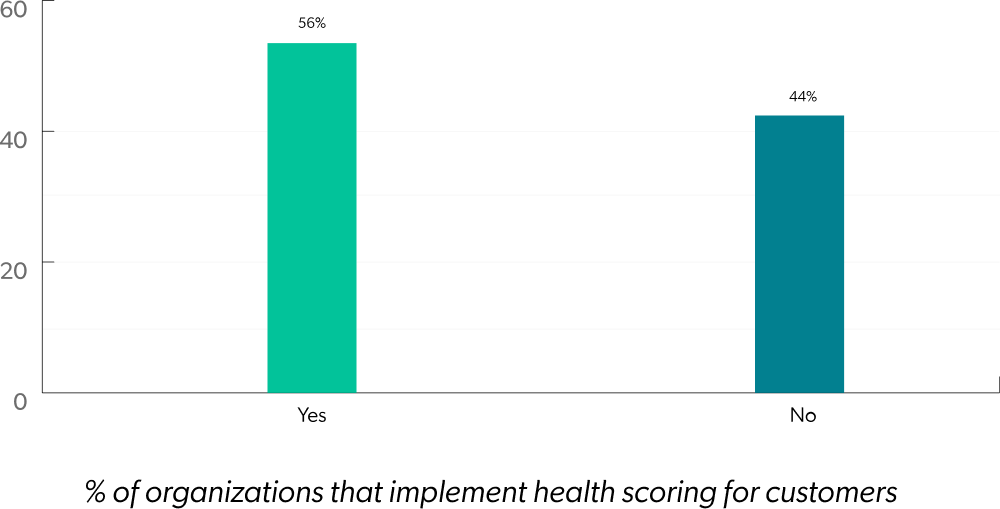
Customer Health Score is a process where you score the customers based on the likelihood of an outcome you desire or deems crucial. It was found that still a whopping 44% of the respondents have not yet implemented health scoring. Health score, essentially helps Customer Success Professionals to closely track the customers & proactively indicate whether the customer is at risk of churn, or is inclined to stay on & grow.
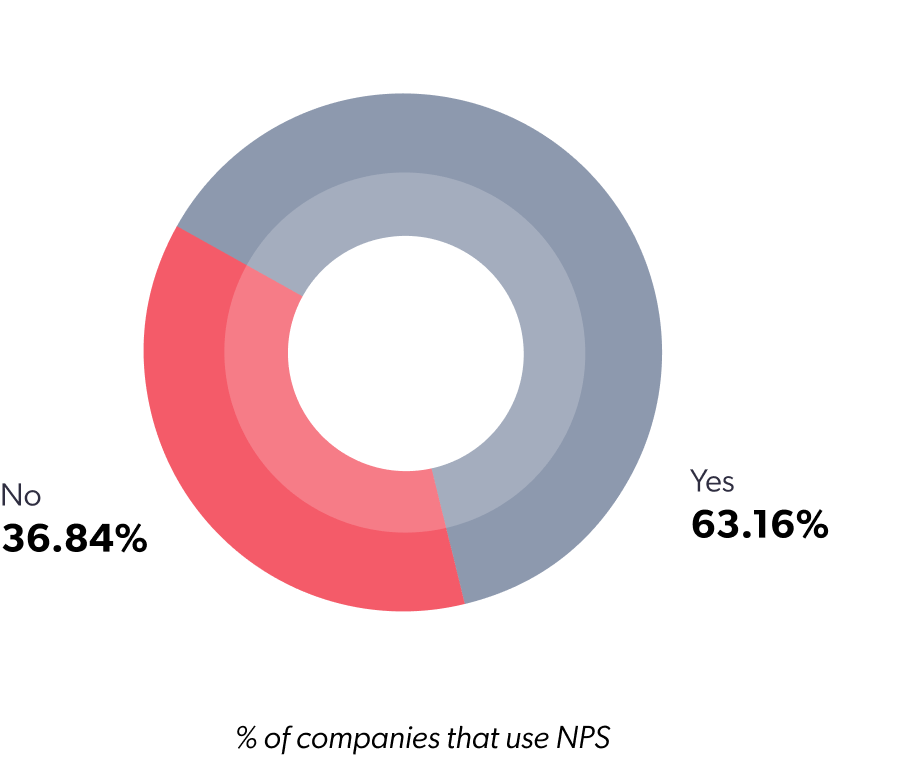
Net Promoter Score or NPS is a simple metric that yields powerful insights into two important aspects of a business — customer loyalty & brand advocacy. The customers are asked to rate their likelihood of recommending a product/service to family or a friend score on an opinion scale. Based on the score, customers fall into three categories- Promoters (who rated 9 or 10), Passives (who rated 7 or 8) , and Detractors (who rated 6 & below).
Although only 8% of the companies' KPIs were NPS, 63.16% of companies use NPS as a success metric. NPS (Net Promoter Score) being a customer loyalty metric that can massively impact growth, retention & advocacy for a business, it helps the organizations to pinpoint major customer-facing issues, and act on them.
Employing the best NPS software to monitor your NPS score & trends, will definitely help you ensure that you're on the right track, moving in the right direction.
You can set yourself to achieve what is considered a good net promoter score in your industry, which in turn can give you an edge over your competitors.

Maranda Ann Dziekonski
Vice President Customer Success and People
Operations at Swiftly
HubSpot & Salesforce continue to be the top choice for CRM software. However, 14% of companies still prefer the use of an in-house CRM tool. A customer relationship management app or software can be called the nuclear of any business.
When it comes to the Sales and Marketing side, there is a lot of 'noise' that happens in the form of finding leads, getting on a call with them, following up and finally closing it. A sale is never closed on the first call. It usually takes up a lot of follow-up calls unless you are the only business in the world, providing that service.
With the help of a CRM, you will get all your conversations in a single place. It can get pretty confusing & hectic to find the right CRM tool, but not impossible. Outline your requirements, the pain points you're trying to solve, and pick the best CRM tool for your business. A CRM app is the perfect solution to be proactive and intuitive.
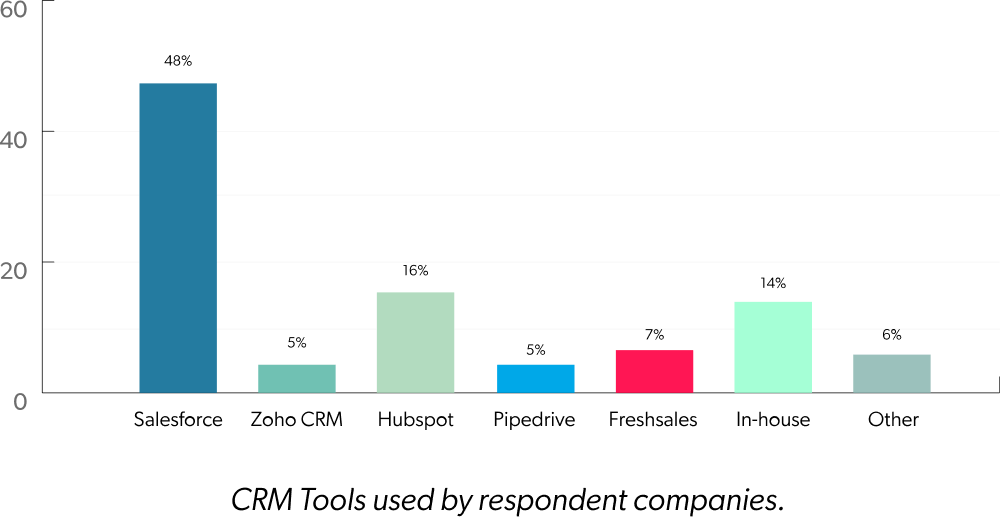
The survey results stated that surprisingly, 38% of companies still don't have a Customer Success tool. In essence, a CS tool helps your team identify which customers require your attention, or more assistance. It tells you where there is a chance of upsetting, & to smooth out customer communications.
This tells us why 44% of companies haven't been able to implement health scoring for their customers successfully. It requires a Customer Success tool to ensure the tracking and maintenance of a variety of metrics over time as well as setting up of proactive alerts.
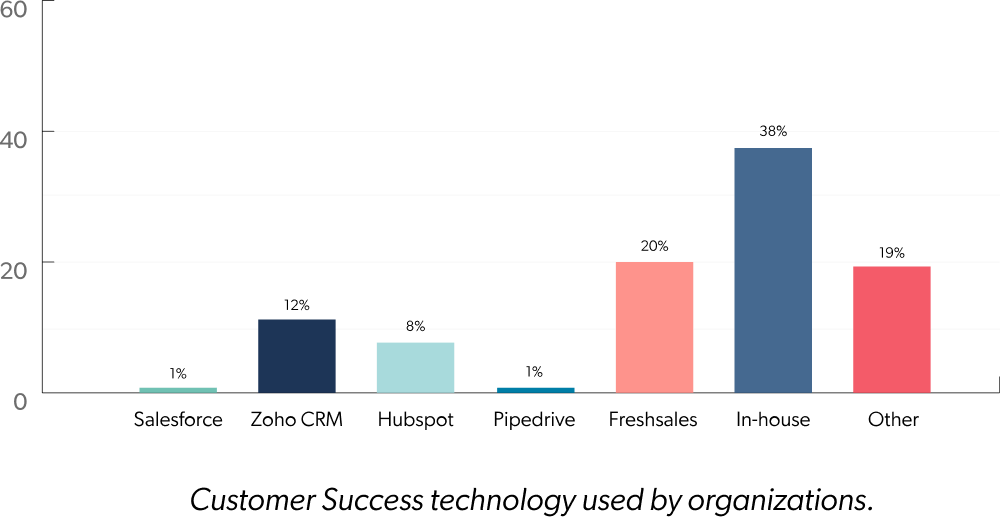

Ashvin Vaidyanathan
Author, Chief Customer Officer at GainsightCompanies go through a consistent set of phases for selecting software
platforms. Starts with
1. Spreadsheets are good enough
2. We can do this in CRM right?
3. We need more best practices, collaboration and productivity to scale
the team. We need a CS platform.
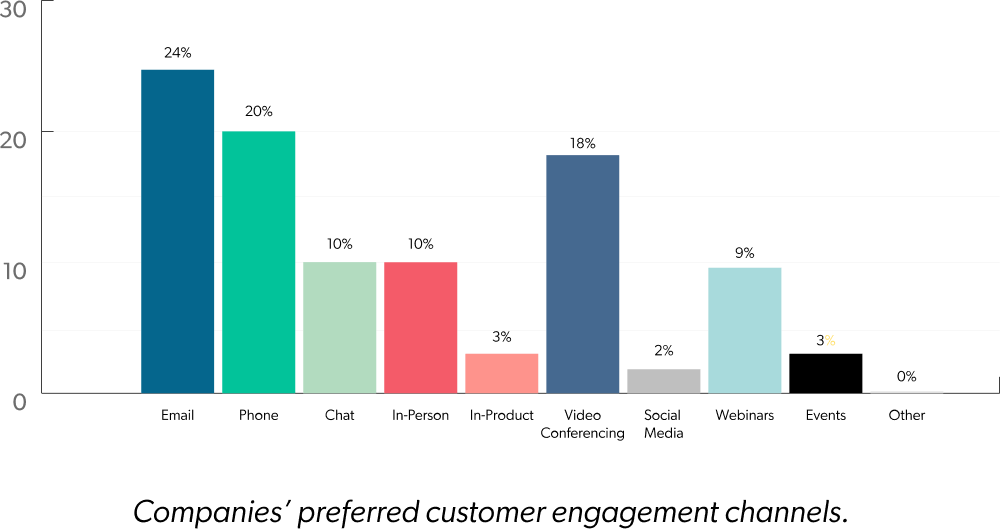
Surprisingly, 10% of organizations have indicated that their preferred mode of engagement is in-person. Most popular communication tools are email, phone, and video conferencing. Engagement channels such as social media, webinars, events, in-product communications, and others come lower on the scale of preference.
Ideally, we believe that in-product communication strategies using surveys and chats would evolve into more robust channels in the future scope of Customer Success.
42% of companies hoping to employ predictive analytics in their Customer Success program in the near future. This trend has not changed much in the last three years, and we anticipate many companies to catch up on this for another 2 to 3 years since these are evolving areas. There are no proven models or widely heard of success stories as yet.
Predictive analytics will come useful for adjusting and optimizing existing strategies to improve customer retention on a larger scale. Artificial intelligence and machine learning tools will contribute to understanding user behavior and automating recurring tasks, respectively.
Studying the trend, we can safely say that Chatbots are a surefire way to improve customer engagement and personalize customer interactions for the better.
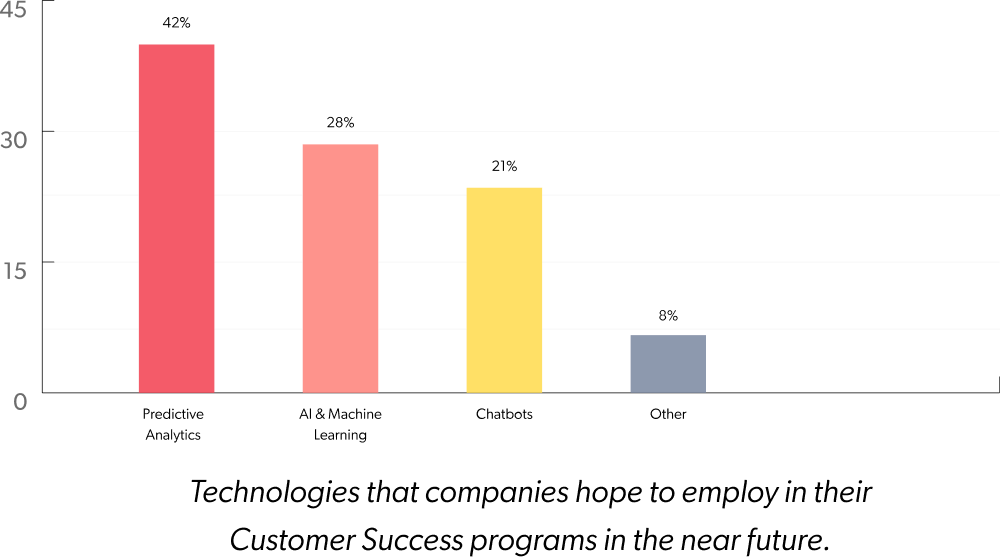
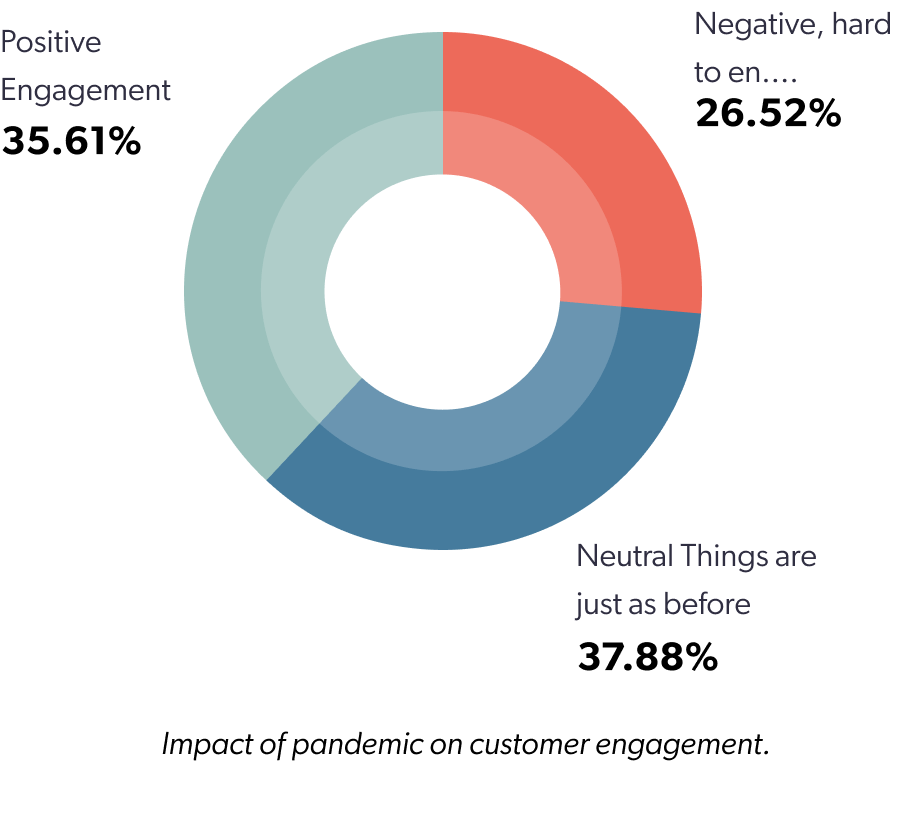
In light of the global pandemic that has taken the world by storm, we had asked respondents to share with us how it has impacted their customer engagement. 37.88% of companies claimed that there has been no significant impact as such on customer engagement.
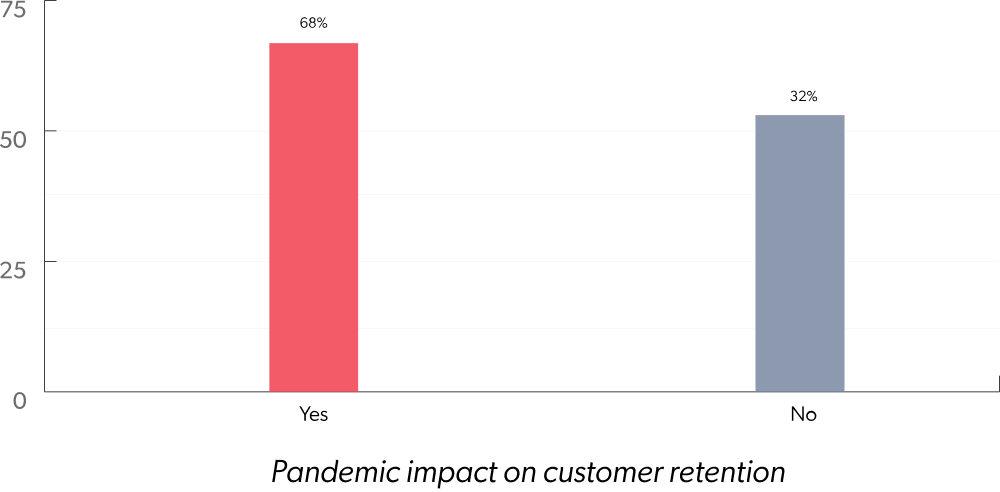
But while exploring the impact of pandemic on Customer retention 68% of organizations declared that the pandemic caused a significant impact on their business'customer retention.
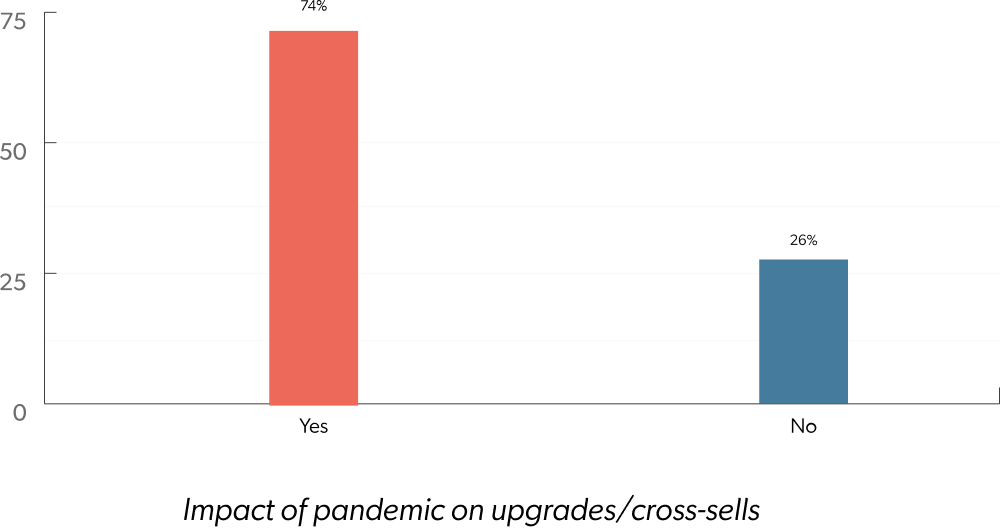
Naturally, the effect of pandemic was reflected on upgrades/cross-sells too. According to the study, though the pandemic didn't drag down customer engagement or retention, it seems it had affected the spending nature of the customers
The customers seem reluctant to invest more on what they already have. Rather they're seen optimizing the current tools and software, making the most of the product they have in their hands. This again, gives the CS function a platform to shine and really come through.
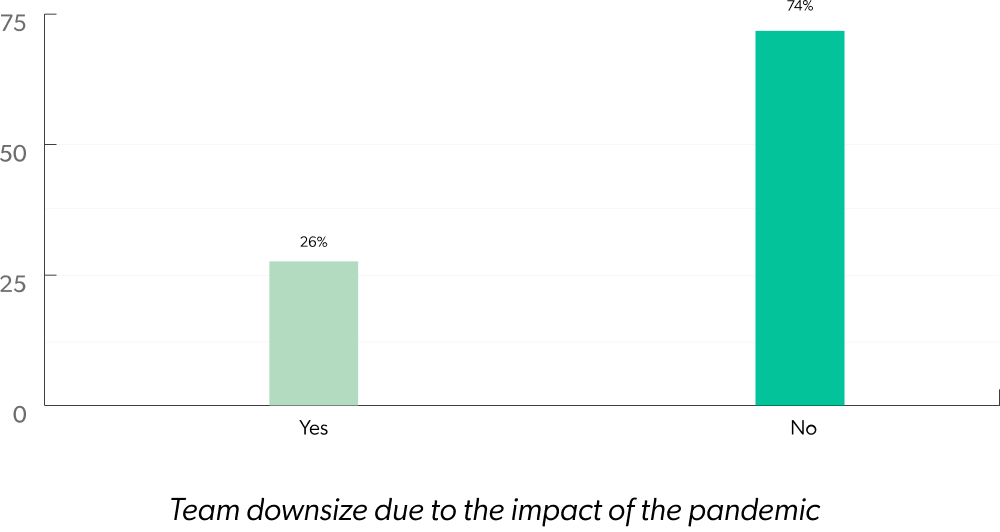
The pandemic had created huge economic distress & business interruptions across the globe. Downsizing the teams is the expected approach from any business to overcome immediate financial struggle. But the survey results left a positive note on that & it was found that 74% of the companies didn't have to resort to such an extreme step.
The survey report clearly mentions that 62% of the respondents didn't have a fear of jobless. This shows that companies are putting in effort to promote employee security and Customer Success is staying strong during these unprecedented times..
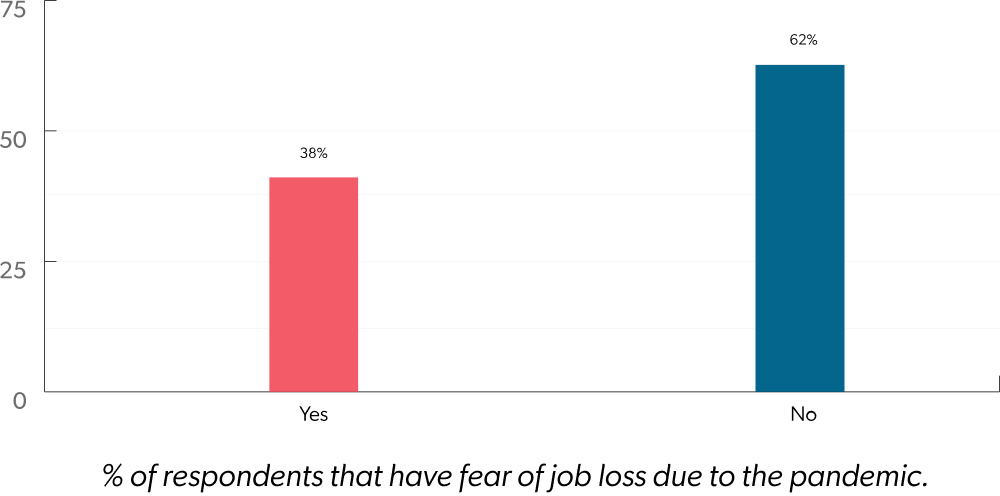
Realizing that this in fact, is an excellent time as any to expand teams effectively, more organizations are on the lookout for new additions to their teams. Work-from-home has proven to be successful in the event of this pandemic - in terms of team collaboration as well as productivity. With 53% of companies having a team expansion plan in place for the next two quarters, we must say, the future looks promising.
The trend lets the department of Customer Success expand its portfolio of team members dedicated towards building strong customer relationships more than yesterday.
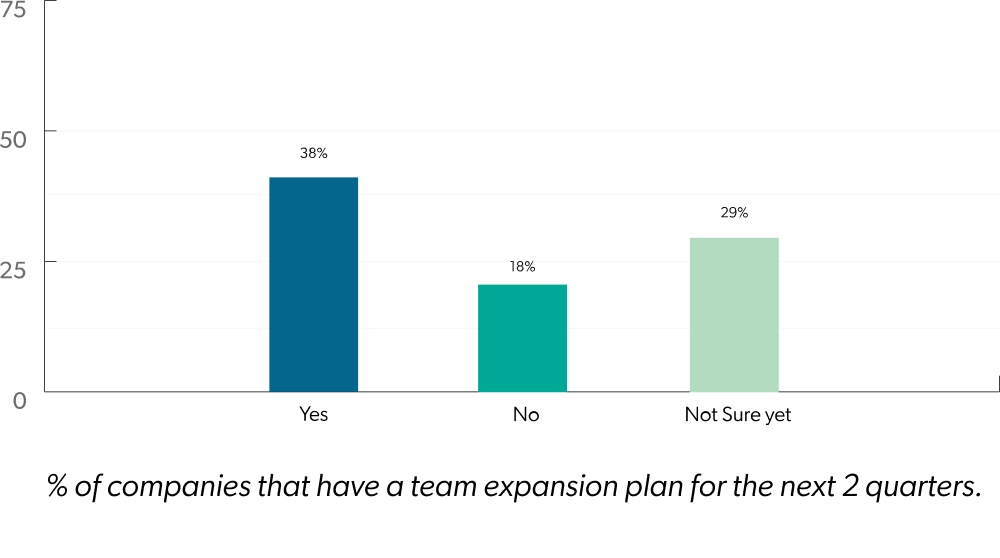

Conclusion
Customer Success without doubt is a vital function of every organization that aids customers in the best way possible. From customer onboarding and customer training to customer retention, the CS team helps the brand to deliver the best possible experience. And has essentially become the factor that can make a company go broke or to achieve super growth.
The Pandemic impact & work-from-home capabilities has led the companies to expand their team base and that promises better space & resources for the CS teams to truly showcase its potential.
It's heartening to see that businesses have realized the importance of having a clearly-defined customer success strategy and how crucial customer success teams are for creating healthy customers.
What came out in our study is that organizations primarily use Customer Success function to increase product usage & to reduce churn. We believe that the scope of Customer Success is much deeper and vaster than that.
Venturing into performance parameters, building more proactive conversations to keep customers engaged and more. Doing customer success right will put your brand in the sweet spot for customer-centric growth and profit.
Research by : Vipin Thomas, Dir. of Revenue, SurveySparrow
Edited by : Indhuja Lal, Product Marketer, SurveySparrow
Illustrator : Avinash Anilkumar, Senior Visualizer, SurveySparrow

